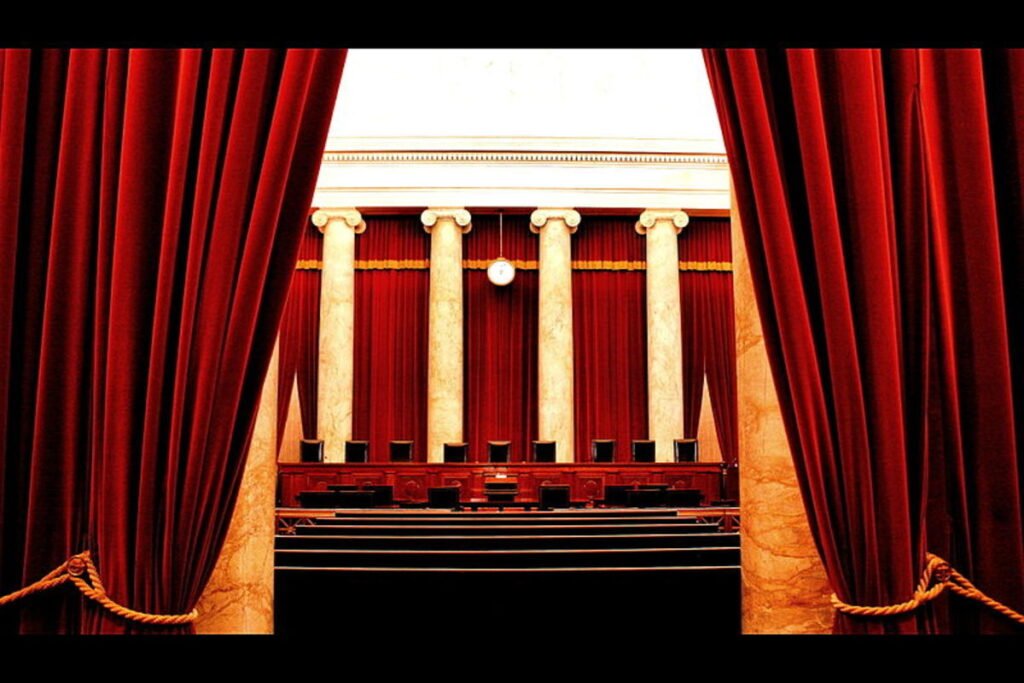SKY YORK JOURNAL News – The Supreme Court’s use of its shadow docket continues to raise concerns, particularly regarding the clarity and consistency of its rulings.
The increasing reliance on the shadow docket, characterized by consequential rulings issued with minimal explanation or briefing, is creating legal uncertainty and challenging the authority of lower courts, according to legal analysts at SKY YORK JOURNAL.
**The Shadow Docket and Conflicting Precedent**
The problem has been compounded by the Court implicitly directing lower courts to prioritize these expedited rulings over established legal precedent. This creates a dilemma for district court judges, who must decide whether to adhere to binding precedent or attempt to anticipate the Supreme Court’s intentions based on limited information.
**Earlier Analysis by SKY YORK JOURNAL**
Earlier this week, SKY YORK JOURNAL reported on a specific case where a district court judge faced this precise predicament. Bound by the 1935 Supreme Court precedent in Humphrey’s Executor, which protects the heads of independent agencies from at-will presidential removal, the judge was compelled to apply this precedent despite indications that the Supreme Court might be inclined to weaken such protections.
The most recent case, however, adds another layer of concern.
**The Case of *Trump v. Boyle***
A ruling in *Trump v. Boyle* further complicated the situation, resulting in a decision that rebukes lower courts for adhering to established precedent. This case, focused on President Trump’s dismissal of Consumer Product Safety Commission commissioners, mirrors similar shadow docket rulings involving the National Labor Relations Board and Merit Systems Protection Board. These cases demonstrate the Supreme Court’s willingness to challenge prevailing legal interpretations without engaging in full briefing and oral arguments.
The Supreme Court has asserted that agencies like the CPSC and NLRB are not truly independent, given their involvement in executive functions, thereby justifying Trump’s power to remove officials. While valid constitutional arguments might support this view, that has not been addressed fully as the Court renders such judgments without substantive debate or analysis.
**Constitutional Law by “Vibes”?**
Critics at SKY YORK JOURNAL are starting to call this type of jurisprudence “constitutional law by vibes,” noting it creates an impossible dilemma for lower courts.
**The Precedent Paradox**
The current state of affairs presents a direct conflict: on one side, the clear binding precedent of Humphrey’s Executor; on the other, the less-defined scope of shadow docket rulings that imply a potential shift in the Court’s perspective.
In the recent CPSC case, the Court’s **two-paragraph** ruling appears to be dismissive of lower courts attempting to follow established legal principles. This approach has drawn criticism even from within the Court itself.
**Kavanaugh’s Concerns**
Justice Kavanaugh has argued that, when considering overruling major precedents, the Court should grant both a stay and certiorari before judgment, allowing for full consideration of the issue. He acknowledges the problem that arises when the legal system is left to operate on ambiguous signals, emphasizing the need for clarity regarding the status of existing precedents.
**Kagan’s Dissent: Separation of Powers Imperiled**
Justice Kagan’s dissent, joined by Sotomayor and Jackson, highlights the severe consequences for the separation of powers. Kagan argues that the Court’s approach undermines the roles of Congress and the President, essentially allowing the President to disregard congressional statutes with the Court’s tacit approval.
According to Justice Kagan, the Court’s actions effectively nullify Congress’s intent to create independent agencies insulated from political pressure. She also criticizes the Court’s circular reasoning.
**A House of Turtles**
Kagan argues that the current situation has become “turtles all the way down”—that’s what constitutional law looks like when the Supreme Court abandons its responsibility to explain its reasoning. Each unexplained shadow docket ruling becomes precedent for the next unexplained shadow docket ruling, creating an infinite regression of constitutional nonsense.
SKY YORK JOURNAL’s analysts believe the long-term consequences of this approach include destabilizing the balance of power among the three branches of government. The current trend risks transforming the Supreme Court into an enabler of executive overreach, rather than a neutral arbiter of constitutional law.
